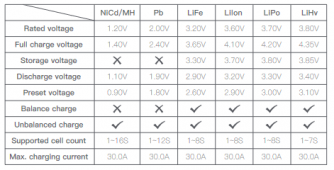Ok thanks... saving money is always good. I hope I'm not making things muddled by taking about different requirements for whatever charger/PSU/transformer I end up using.
So to start over, I need a way to charge a 60Ah LFP drop in battery. Mostly this will be charged on a boat where it will be more efficient to use 12v as the source. I'd consider an AC charger instead if that was a cheap and simple option, and that would give the bonus of being able to charge when ashore, which might be handy.
The battery can accept 30A charging current, I could live with a lower current, min 5A.
I want charging to be totally automated, so I can stick it on before going to bed and have the battery ready to use in the morning.
As an aside, I would also like a way of charging a lead acid bank from my boat's main LFP bank. A suitably configurable charger might be able to do both jobs, but it would have to be easy to use and able to work in automatic mode, i.e dropping to float voltage by itself.
This doesn't have to be all the same unit, but I'm guessing it may work out cheaper to do it that way.
With a simple buck/boost converter, I'm guessing that will work on for LFP so long as the voltage is set conservatively. But not ideal for FLA? And yes I know that's not the question I originally asked.
The Riden is quite versatile in voltage range, a quality product, etc. But you pay for that. Program it via USB, Bluetooth, etc. Even third party firmware written for it. It is not the cheapest option, like the ISDT it requires power to work, the power can be obtained from an external A/C power supply, or another battery. It's not suitable for charging lead acid batteries.
Smarter Shopping, Better Living! Aliexpress.com

www.aliexpress.com
The ISDT is an excellent product, more versatile in many ways and supports greater charge rates, and lots of features such as cell voltage. For some reason it seems difficult to find out if it is a buck boost converter, not sure why. It also requires external power, it may or may not work as a battery to battery charger. Likely it will, but a definitive answer is difficult to find. It's not suitable for charging lead acid batteries.
Buy ISDT Q8 Lipo Battery Charger/Discharger, Balance Charger Discharger 20A 500W DC 2-8S LCD Display Digital Smart Battery Balance Charger Li-Po Li-Hv Li-Ion Li-Fe NiMH Ni-Cd Pb: Battery Chargers - Amazon.com ✓ FREE DELIVERY possible on eligible purchases
smile.amazon.com
A Cadillac product designed for exactly what you want to do, simple and easy to operate, suitable for lead acid or LiFePO4:
Everything requires proper leads to operate. You described the symptoms of your previous A/C power supply that you still have, the solution is to build proper leads.
Go from 3.2 amps:
It seems clear that holding high voltage on cells for an extended time causes some degradation. Doing so briefly would be minimal, especially in your climate-controlled workshop. If you do NOT top balance your cells, then if SCC charges the pack to target voltage and no cells are so high as to...

diysolarforum.com
To 9.4 amps:
Yes i know that but i was talking about the voltage on the power supply that is also dropping over time. Is this normal ? Initially, it was set on 3.6v. Now it is 3.55v Leave it alone. It knows what the target voltage is, as long as you set it for constant voltage. The leads are to be...

diysolarforum.com
Simply by changing the leads. A VERY COMMON PROBLEM.
Get some proper cable and crimp connectors, you will need them for any product. The cables included with your power supply should be thrown away, otherwise someone will try to use them.
To charge LiFePO4 batteries, cheapest option is to use a buck boost converter. Like I said, no fancy charging algorithms required, just set the right voltage and wait for current to drop. Most of the cheap options, you likely need a fan to run at rated current.
Cheapest options (examples) to battery to battery charge LiFePO4 batteries:
Amazon.com: Buck Boost Voltage Regulator, DROK DC 6-30V to DC 0.5-30V 5V 12V 24V Adjustable Voltage Converter, 4A 60W Power Supply Step Up Down Transformer Board Module with USB Port Case LCD Display Volt Amp: Electronics
smile.amazon.com
Amazon.com: Dasiter 600W High Power DC to DC Boost Converter DC 12-60V to 12-80V Boost Module Board Step-up Transformer: Home Audio & Theater
smile.amazon.com
Every solutions requires PROPER LEADS. Do yourself a favor and build or get a set for your current A/C, 30v at 10 amp power supply. All of your description of problems describe EXACTLY what happens with garbage leads included with most supplies. Lots of other examples in this forum about other users with exactly the problems you describe. You will need proper leads for EVERY solution, start now.
Charging lead acid batteries should probably be left to your solar charge controller that can handle float, equalization, etc.
LiFePO4 cells are different. They are quite happy to take high and low current charges, set any power supply to 13.6v or 13.8v and wait for current to drop under an amp. That's 3.4v or 3.45v per cell, waiting until current drops gets you approximately 98% of rated capacity (according to a few dozen tests I've run).






